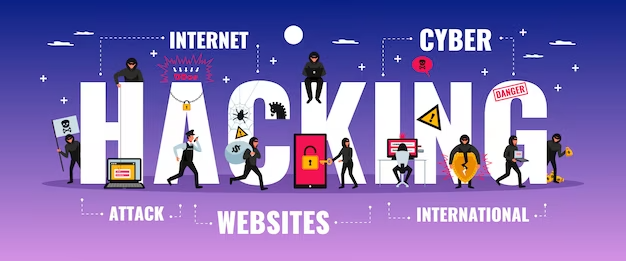Introduction
The world of technology has exponentially grown, providing numerous benefits that have simplified people’s day-to-day lives. However, alongside these benefits also come potential vulnerabilities for malicious hackers to exploit. As a result, it has become necessary to have ethical hackers who can help identify and patch vulnerabilities before hackers with malicious intent can exploit them. This article dives into ethical hacking and its significance in securing systems.

Definition of ethical hacking
Ethical hacking is a process where a security professional, commonly referred to as a “white hat hacker”, uses the same techniques and tools as a malicious hacker to locate vulnerabilities in a system and report them back to the organization to fix. It is a proactive approach to identify weak spots in the system and fix them before the system is exploited by malicious hackers. Ethical hacking aims to secure the system and prevent attacks from happening.
Importance of ethical hacking in securing information
The importance of ethical hacking is immeasurable, as it plays a critical role in identifying and eventually fixing potential security breaches. Cybersecurity incidents are increasing, and companies can avoid any breaches by hiring ethical hackers to assist them in identifying vulnerabilities in their system. Ethical hacking is not only crucial to protect the organization’s data but also the individual’s personal information available on the system.
Understanding the Mind of a Hacker
To think like a hacker, it’s essential to understand their motivation. Hackers are driven by different factors like financial gain, curiosity, revenge, and political motivation, among many others. Understanding the types of hackers and what motivates them, enables security professionals to develop practical approaches to identify and counter their attacks before they happen. The different types of hackers include white hat hackers, black hat hackers, grey hat hackers, and hacktivists.
The Phases of Ethical Hacking
Ethical hacking has different phases that help security professionals identify and counter potential threats in the system. These include:
Reconnaissance
Reconnaissance is also known as footprinting. In this phase, the hacker gathers information about the system. The information includes the target system’s IP range, system architecture, employee information, and company information.
Scanning
Scanning is the process of discovering open ports and vulnerabilities of the target system. The information gathered helps the hacker identify the right tools and techniques to use in gaining access to the system.
Gaining Access
This phase involves the hacker trying to access the target system. The hacker may use multiple techniques like password cracking, social engineering, or exploiting system vulnerabilities to gain access to the system.
Maintaining Access
The hacker will try to maintain access to the system by creating backdoors or using remote access tools. The purpose of this phase is to make sure the hacker will still be able to access the system even after the organization has patched the vulnerability.
Covering Tracks
The hacker will try to cover their tracks by deleting logs and removing any indication that they accessed the system. Their aim is to avoid being traced back to the breach.
Ethical Hacking Tools and Techniques
Ethical hacking tools and techniques are essential for security professionals to identify vulnerabilities and test their security measures. It is crucial to use ethical hacking tools and techniques to ensure tests are carried out safely and securely. These include:
Overview of ethical hacking tools
Ethical hacking tools are software programs created explicitly for identifying vulnerabilities in a system. These tools help security professionals identify loopholes in the system, ultimately resulting in a more secure system.
Popular ethical hacking tools and their uses
Some popular ethical hacking tools include Nmap, Metasploit, the Open Web Application Security Project (OWASP), and Burp Suite. These tools are used for scanning, testing web application vulnerabilities, and breaking in or exploiting the system’s weakness.
Techniques used in ethical hacking
The different types of techniques used in ethical hacking are network scanning, vulnerability scanning, password cracking, social engineering, physical testing, and various other techniques to exploit vulnerabilities.
Common Network Security Vulnerabilities
Network security vulnerabilities are a hotspot for malicious attackers because they enable them to exploit a system in various ways. The most common network security vulnerabilities are:
Network vulnerabilities and their exploitation
Network vulnerabilities can be exploited through several methods. These include denial of service attacks, packet sniffing, session hijacking, MAC Spoofing, DNS Spoofing, and various other methods.
Types of attacks possible
Some of the most common attacks include man-in-the-middle attacks, brute force attacks, phishing attacks, and malware attacks.
Web Application Security
With the growth of web applications in businesses, comes an increase in vulnerabilities that can be exploited. Understanding web application security helps in identifying and fixing potential security breaches.
Understanding Web Applications
Web applications are software applications running on web servers or accessed by the client through a web browser. Understanding how web applications work and operate helps in identifying potential vulnerabilities and securing the application.
Common web application vulnerabilities and how to exploit them
Some common web application vulnerabilities include SQL Injection, Cross-Site Scripting, File Inclusion, and other vulnerabilities that can be exploited by using different techniques and tools.
Social Engineering: The Art of Human Hacking
Social engineering is an attack method aimed at manipulating individuals into divulging sensitive information that can be used to exploit network security.
Introduction to social engineering
Social engineering is an attack method widely used by hackers to gain access to systems by exploiting human psychology. The technique involves extensive knowledge of social interactions and communicating with people to obtain sensitive information.
Types of social engineering attacks
The most common social engineering attacks are phishing, pretexting, baiting, tailgating, and quid pro quo.
Password Cracking Techniques
Password cracking techniques are used by hackers to obtain passwords and access systems illegally.
Need for password cracking techniques
Passwords can be the weakest link in the security chain. It is thus essential to understand the different password cracking techniques used by hackers and employ countermeasures to prevent them.
Popular password cracking techniques
Popular password cracking techniques include Brute Force attacks, Dictionary attacks, Rainbow Tables, and Hybrid attacks.
Wireless Network Security
Wireless networks pose unique security risks due to their nature of wireless transmission. Security professionals require knowledge of wireless network security to ensure secure wireless networks.
Overview of wireless network security
Wireless network security refers to the protection of wireless networks from unauthorized access.
Types of wireless networks and their vulnerabilities
The most popular types of wireless networks are Wi-Fi networks, Bluetooth networks, and cellular networks. Each of these networks has its specific vulnerabilities.
Wireless network hacking techniques
Wireless network hacking techniques involve exploiting vulnerabilities in the security protocols used in wireless networks. These techniques include sniffing, jamming, and cracking.
Cloud Security
Cloud computing has become an essential business tool, and it is important to ensure that it is secure. The Cloud security involves securing the cloud infrastructure, applications, and data.
Overview of cloud computing
Cloud computing refers to the delivery of computing resources over the internet. It provides on-demand access to computing resources like servers, storage, and applications.
Cloud security risks and vulnerabilities
Cloud security risks and vulnerabilities include data breaches, account hijacking, insider threats, insufficient due diligence, and regulatory compliance issues.
Ethical hacking in cloud computing
Ethical hacking in cloud computing helps to identify vulnerabilities and secure the cloud infrastructure by regularly testing the system.
Incident Response Best Practices
Regardless of the security measures, there is always a possibility of a security breach. Incident response is how an organization responds to the security breach.
Importance of incident response
Incident response is essential in mitigating damages, containing the breach, and preventing additional attacks.
Steps for an effective incident response plan
The steps for an effective incident response plan include preparation, identification, containment, eradication, and recovery.
Ethical hacking in incident response
Ethical hacking in incident response is necessary to identify the source of the breach, how it happened, and prevent a similar occurrence in the future.
Compliance Standards and Regulations
Compliance standards and regulations are put in place to ensure the privacy and security of individuals’ data.
Overview of compliance standards and regulations
Compliance standards and regulations are regulations and guidelines put in place to ensure that businesses handle data in a transparent, safe and secure manner.
Importance of compliance in ethical hacking
Compliance standards and regulations help to set ethical standards and guidelines for ethical hacking.
Auditing and Reporting
Auditing and reporting help organizations assess their security measures and identify vulnerabilities
Legal and Ethical Issues in Ethical Hacking
Legal and ethical issues in ethical hacking are critical considerations that organizations must address.
Overview of legal implications of ethical hacking
Legal implications of ethical hacking include invasion of privacy, unauthorized access, and other legal violations.
Ethics of ethical hacking
The ethics of ethical hacking involve maintaining integrity, objectivity, and confidentiality while testing the security measures in the system.
Safeguards by ethical hackers to avoid legal and ethical issues
Ethical hackers must employ safeguards to avoid any potential legal and ethical issues in their work.
Ethical Hacking Best Practices
Implementing ethical hacking best practices can ensure the success of an ethical hacking campaign.
Planning and preparation for ethical hacking
Before beginning any ethical hacking campaign, it’s mandatory to plan and prepare to avoid any adverse effects.
Implementation of ethical hacking
The implementation of ethical hacking requires guidelines, and the objective must be identified.
Effective Communication and Collaboration in Ethical Hacking
Effective communication and collaboration between all stakeholders involved are necessary in ensuring the success of ethical hacking.
Advancements in Ethical Hacking
Ethical hacking is continually transforming and evolving due to technological advances and changes.
Growth of ethical hacking globally
The growth of ethical hacking globally is a result of the increase in hacking incidents and rising awareness of the importance of cybersecurity.
Emerging trends and tools
Emerging trends and tools in ethical hacking include artificial intelligence, the internet of things, and machine learning.
Benefits of Ethical Hacking
The benefits of ethical hacking include securing systems, reduced cyber threats, compliance with regulations, and peace of mind for individuals and organizations.
Conclusion
Ethical hacking is crucial in securing systems and protecting sensitive information. It is essential to understand the different types of hackers, their motivations, and the tools and techniques employed in ethical hacking. Employing ethical hacking safeguards and practices can prevent potential legal and ethical issues.
FAQs
Common questions about ethical hacking
Some common questions about ethical hacking include:
- What is ethical hacking?
- Why is ethical hacking essential?
- What are the steps in ethical hacking?
- What are the popular ethical hacking tools and techniques?
Answers to common ethical hacking queries.
Answers to common ethical hacking queries involve an understanding of ethical hacking, the phases of ethical hacking, ethical hacking tools, network security vulnerabilities, web application security, wireless network security, cloud security, incident response best practices, and ethical hacking best practices.
Want to learn Ethical Hacking for free? Click here to watch complete ethical hacking course.
Do you want to start your own digital marketing agency, but have no idea where to begin? We are here to help you. Read this article to know more.


